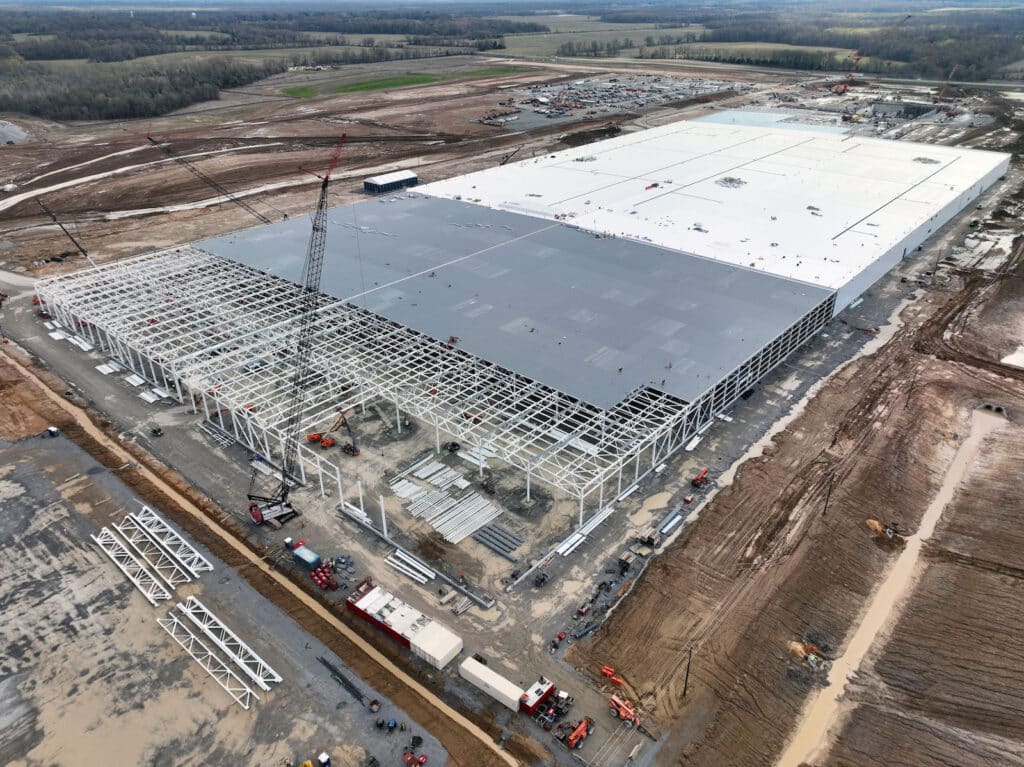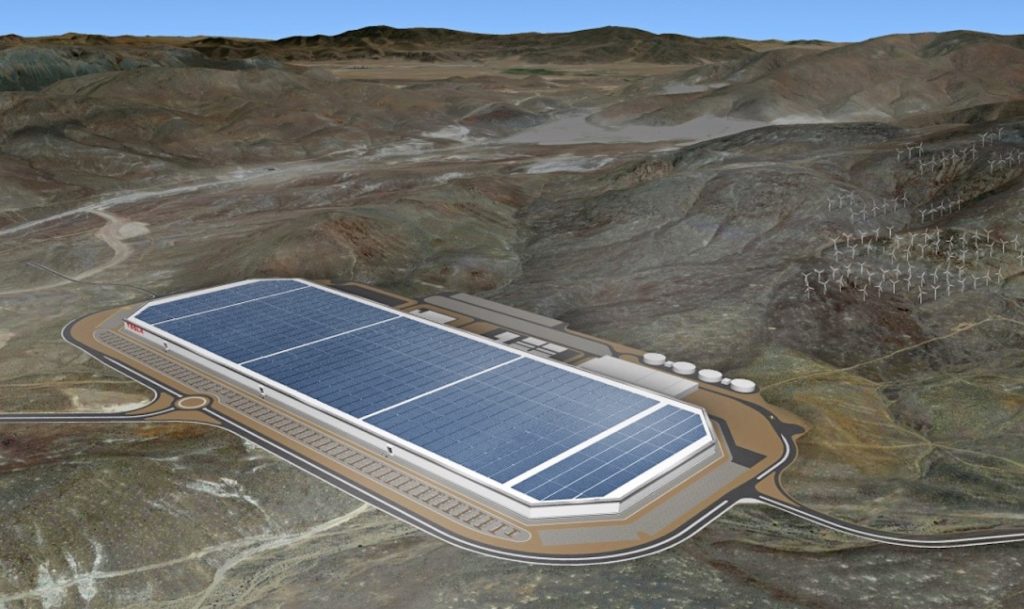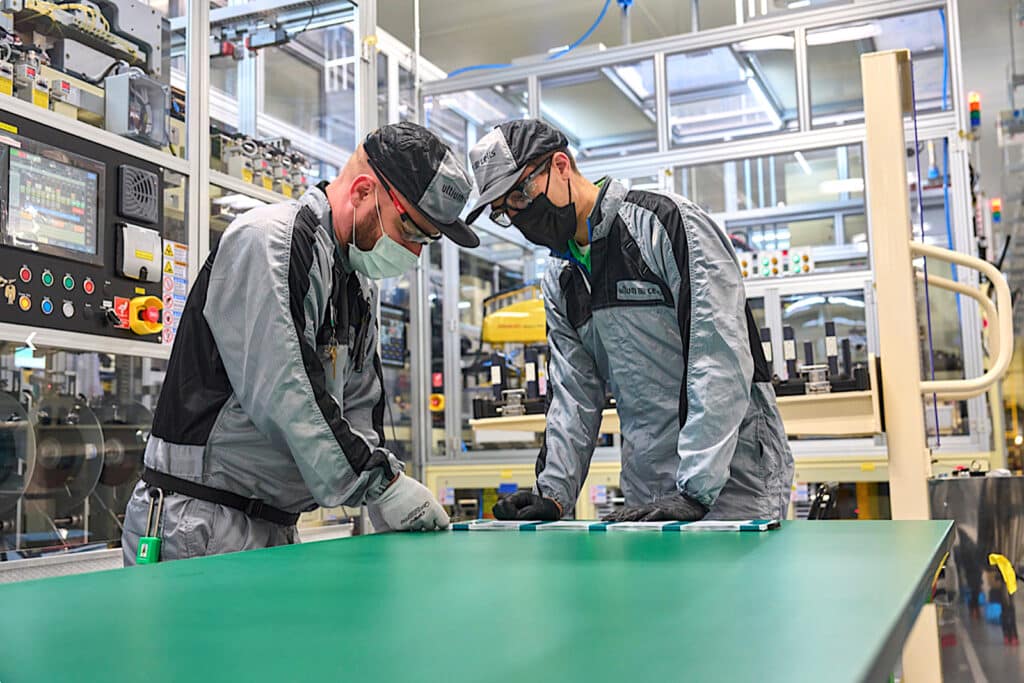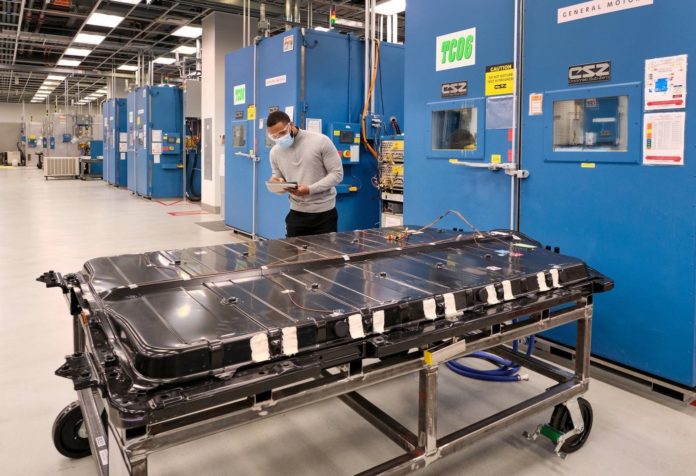Sales of battery-electric vehicles have grown by more than 750% since 2019, and the majority of those EVs are now produced in the U.S. But a sizable share of the batteries used for those vehicles are being imported, largely from China, the world’s largest producer of lithium-ion technology.
That’s something expected to change dramatically over the coming decade. Domestic production of EV batteries could grow by as much as 2,000% by 2030, according to a forecast by the U.S. Department of Energy. Last year alone, industry data shows that $73 billion in projects were announced for the U.S., many of them following the August passage of the Inflation Reduction Act which ties EV incentives to domestic production of their batteries, along with local sourcing of the critical minerals they require.
“So far, 17 new EV battery facilities have been announced, aided by the latest round of Federal incentives in the Inflation Reduction Act,” Bank of America Securities Research Analyst Andrew Obin wrote in a Feb. 22 report to clients. Additional projects have been announced since Obin issued that report.
Impact of new law
Under the IRA regulations, EVs will be eligible for up to $7,500 in buyer incentives if they meet a series of strictures. To start with, they will need to be assembled in the U.S., Canada or Mexico. In turn, Congress set caps on both buyer income and EV pricing. That tops out at $80,000 for vehicles defined as SUVs. And the price cap is a lower $55,000 for EVs falling into the sedan, coupe, hatchback and wagon categories.
A number of foreign-owned manufacturers, including Volkswagen, Volvo, Polestar and Mercedes-Benz, have already committed to shifting some EV manufacturing to North America. And some have cut prices — Tesla most notably — to make sure some of their products will fall below the price caps.

Now, the race is on to meet two other IRA strictures. Half of the available incentives — or $3,750 — are to be based on escalating targets for battery production. They must be produced somewhere within North America. To qualify for another $3,750, the key minerals used in those batteries, including lithium, nickel, cobalt and manganese, must come from the U.S. or its free trade partners.
(Final guidelines are soon to be released by the Treasury Department. Senator Joe Manchin, the West Virginia Democrat who proposed the battery sourcing mandate, has threatened to sue if the White House waters down that target.)
Capacity increasing
Even before the IRA was enacted, the number of battery plants targeted for North America — primarily the U.S. — was on the rise. But the pace has accelerated rapidly since the revised incentives program was put in place.
As Bank of America’s Obin noted, 17 plant projects linked to the IRA were announced by late February. But the number continues to grow. Volkswagen has since announced a new Canadian facility that will supply an assembly plant in South Carolina set to build SUVs and pickups for its new Scout brand.

Most of the new plants won’t be operational until mid-decade. Last year ended with just 54 gigawatt-hours worth of battery capacity in the U.S., according to the Argonne National Laboratory. That was barely more than five years earlier, when the first Tesla Gigafactory in Reno, Nevada went online. But Sam Abuelsamid, principal analyst for Guidehouse Insights, forecasts that will jump to about 500 GWh in 2025.
And the U.S. Department of Energy’s Vehicle Technologies Office estimates the figure will double again, to around 1 terawatt-hour by 2030.
Ford, for example, already has four factories in the works, including twin battery plants in Kentucky and a third on the site of the $5 billion BlueOval City manufacturing complex its setting up near Memphis to build EV trucks. In February, it announced a fourth battery plant — at a cost of $3.5 billion — in Marshall, Michigan. All told, those facilities alone will have the capacity to produce over 100 gWh of lithium-ion cells.
Demand rising

The amount of batteries used in an EV can vary widely by model. The standard-range pack in the new Hyundai Ioniq 6 has a capacity of just 54 kilowatt-hours. With the long-range version of the GMC Hummer pickup, it’s more than 200 kWh. But the general consensus is that the U.S. will end the decade with enough battery capacity to power up somewhere between 10 million and 13 million vehicles.
“This capacity will provide more than enough batteries for the U.S. to reach the Biden administration’s goal of 50% EV sales by 2030,” Nick Nigro, founder of the public policy group, Atlas Public Policy, told CNBC earlier this month.
A disproportionate share of those new plants will show up in three states, Michigan, Georgia and Kentucky, though Kansas, North Carolina, Ohio and Tennessee also will have significant production capacity.
And the race will have a spin-off effect, with dozens of plants set to pop up to produce battery components, such as separators, cathodes and anodes. Entek will invest $1.5 billion to set up a plant in Indiana. Albemarle Corp. is investing $1.3 billion for a lithium processing facility near Charlotte, South Carolina. And Cirba Solutions plans to spend $300 million on a nearby metal processing facility. A number of battery recycling plants are also in the planning stage, including one that will operate out of Ford’s BlueOval City complex.
Billions more will be invested in the hunt for new raw material sources. Already, dozens of potential sites are in development. And while most will follow the traditional path, digging into the earth, others will take more novel approaches. At least two projects aim to capture the lithium contained in the brine water of aquifers found below California’s Salton Sea.
In all, analysts like Abuelsamid and Nigro expect the IRA to help generate tens of thousands of jobs, and hundreds of billions of dollars in investments, to transform the U.S. into one of the world’s leading producers of EV batteries.

